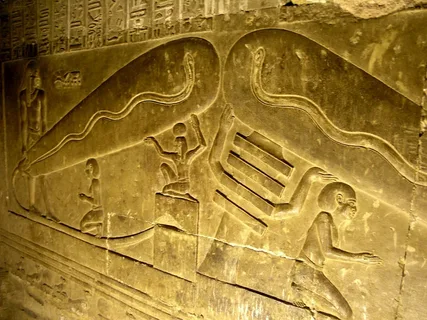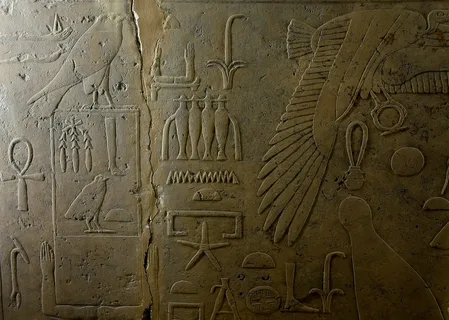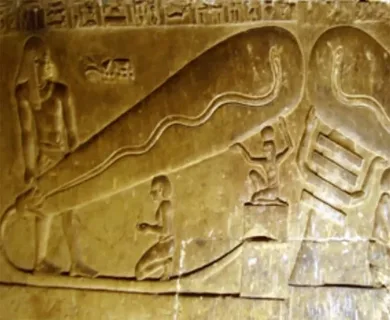Investigating Ancient Records and Archaeological Findings of Possible Extraterrestrial Encounters Throughout Human History
For centuries, humanity has gazed at the stars and wondered whether we are alone in the universe. While modern scientific efforts to detect extraterrestrial life are grounded in astronomy, biology, and advanced technology, there has long been a parallel line of thought—one rooted in ancient history, mythology, and archaeology. Could it be possible that humanity has already encountered beings from beyond our world in ancient times? This question forms the basis of a controversial but captivating field of inquiry, where scholars, enthusiasts, and researchers explore ancient records and archaeological findings for signs of potential extraterrestrial contact.
One of the most cited sources in discussions of ancient alien contact is the corpus of Sumerian texts dating back to around 4,000 BCE. These early Mesopotamians recorded myths on cuneiform tablets describing powerful beings known as the Anunnaki, deities who descended from the heavens to create or guide humanity. According to interpretations popularized by authors such as Zecharia Sitchin, the Anunnaki may not have been gods in the religious sense, but rather advanced extraterrestrials who genetically engineered humans for labor.
Though mainstream scholars view the Anunnaki as mythological figures within a cultural-religious context, ancient alien theorists argue that the specificity of the descriptions—including “flying ships” and “heavenly tablets”—could imply technological encounters beyond the capabilities of early civilizations.
Ancient Indian texts, particularly the Mahabharata and Ramayana, also describe flying machines called Vimanas. These vehicles are said to have been capable of moving through the sky with great speed and sometimes even leaving the atmosphere. Some passages describe aerial battles with advanced weaponry resembling modern guided missiles or lasers.
Supporters of the ancient astronaut theory suggest that these stories are not mere allegories or poetic exaggerations but rather historical accounts of technologically advanced visitors witnessed by ancient peoples and interpreted through their limited understanding.
In the Hebrew Bible, the Book of Ezekiel contains a vivid vision in which the prophet describes a flying “chariot” composed of wheels within wheels and guided by beings with human and animal faces. Interpreters like NASA engineer Josef F. Blumrich argued that Ezekiel’s vision could describe a spacecraft using symbolic language.
Mainstream religious scholars interpret this as a divine vision or spiritual metaphor. However, the mechanical and symmetrical nature of the description continues to provoke speculation among those open to the idea of ancient UFO sightings.
Spanning over 1,000 square kilometers, the Nazca Lines are a series of enormous geoglyphs etched into the desert floor of southern Peru. They depict animals, plants, and geometric shapes—some stretching hundreds of meters. What makes them especially mysterious is their visibility: the designs can only be fully appreciated from the air.
This has led some to suggest that the lines were created either for or with the help of aerial visitors. Could the Nazca have created these lines as signals to beings flying overhead—or were they guided by such beings in designing them?
The stone lid covering the tomb of K’inich Janaab’ Pakal, a 7th-century Maya ruler, has sparked debate due to its intricate carvings. Some interpret the image as Pakal seated in a rocket-like structure, manipulating controls, with fire or propulsion below him.
While Maya scholars read this imagery as symbolic of the ruler’s journey to the underworld, the visual similarity to modern rocket interiors has fueled speculation of ancient knowledge—or perhaps influence—of advanced transportation technology.
The Dogū are small humanoid figurines created during Japan’s Jōmon period (14,000–400 BCE). With their oversized heads, large eyes, and what appears to be body armor or technological suits, the Dogū have been interpreted by some as depictions of extraterrestrial visitors in protective gear.
Although archaeologists typically consider Dogū to be fertility icons or ritual figures, their highly stylized and out-of-place appearance continues to inspire debate.
Built around 2,500 BCE, the Great Pyramid of Giza remains one of the most impressive architectural feats in history. Even today, questions abound about how such an enormous structure was built with the tools and techniques available at the time.
The precision of the pyramid’s construction—its alignment with celestial bodies, use of the golden ratio, and near-perfect measurements—has led some to speculate whether ancient engineers had help from an advanced source, perhaps extraterrestrial.
The Roman-era temple complex of Baalbek stands on an even older foundation, including the “Trilithon”—three colossal stone blocks each weighing over 800 tons. These stones were moved and placed with such precision that their transportation and positioning remain a mystery.
While most archaeologists attribute this to unknown but possible ancient construction techniques, others wonder if such feats were enabled by technology or knowledge lost—or gifted—long ago.
Across the world, prehistoric cave art includes unusual figures with elongated heads, radiant halos, and what appear to be helmets or suits. These are found in locations ranging from the Tassili n’Ajjer cave paintings in Algeria to the Val Camonica engravings in Italy.
Some of these figures bear a striking resemblance to modern depictions of astronauts. Were these simply artistic expressions or symbolic beings—or did early humans witness visitors they tried to record with the means they had?
While definitive proof of extraterrestrial contact in ancient times remains elusive, the abundance of strange accounts, anomalous artifacts, and unexplained structures invites us to keep exploring. Whether these are misunderstood relics of ancient ingenuity, symbolic expressions of spiritual encounters, or true records of contact with beings from other worlds, they reflect a deep and persistent curiosity about our origins and place in the cosmos.
As archaeological technology advances, and as humanity itself continues to venture into space, we may someday uncover more clues—either confirming ancient memories or reshaping them in the light of new understanding. Until then, the mystery of potential extraterrestrial encounters in human history remains one of the most fascinating crossroads between science, mythology, and imagination.











